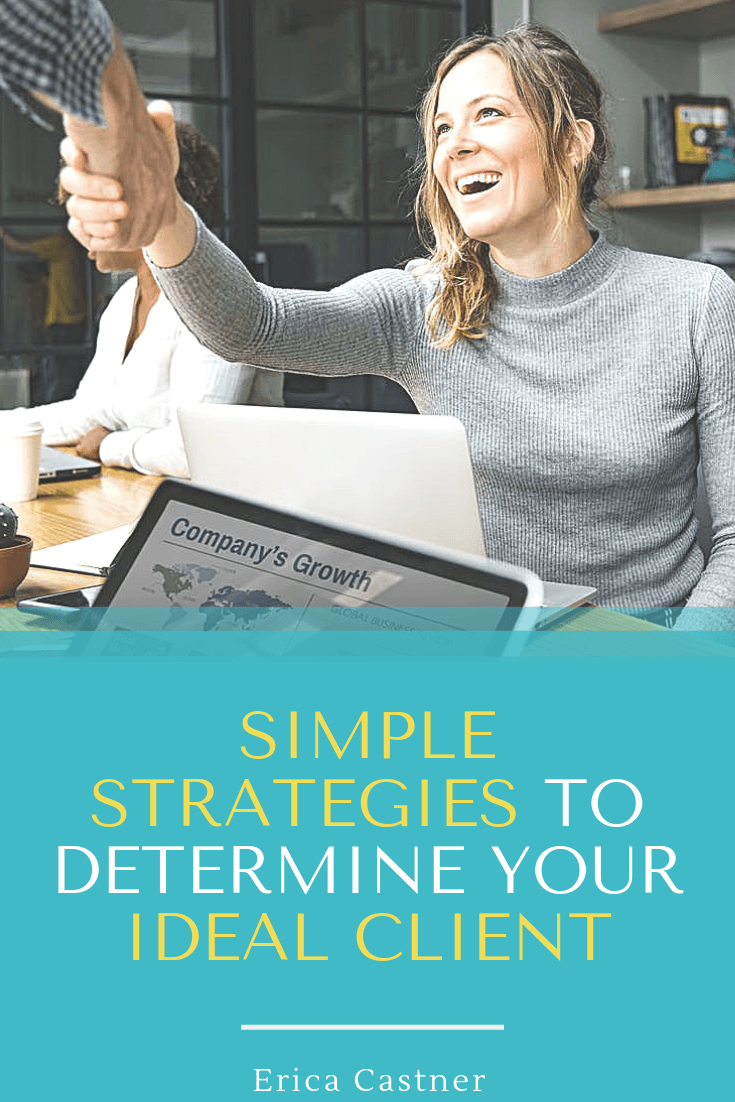Simple Strategies to Determine Your Ideal Client


Video Transcription:
In my last post, I talked about five ways to position yourself in front of your ideal clients, so today, I want to talk to you about some simple strategies to determine who your most IDEAL client actually is.
Your dream clients are people you really want to work with. I feel that the biggest Achilles heel for a lot of entrepreneurs and sales professionals is that they think anybody and everybody is their client. Even if you are in an industry where a lot of people need your product or service, it’s going to be very damn tiring for you to go out there and constantly a shout your message to the rooftops as it relates to positioning your product or service. So it is important to identify the people that are actually conversing and marketing and having those awesome relationships with the clients that you truly want to serve.
Most of you who are reading are service providers, so you know that if you having a professional service is a very intangible thing. People generally can’t see the benefits of the service you provide until you provide the service but selling it upfront can seem a little daunting.
Unlike in the retail world where I came from, where if I were selling phones, you would understand the value of the phone. You can see it, you can touch it, you can experience it and you can decide for yourself if that product is going to be something that you’re going to invest in. However, in the service-based world, it’s a totally different ballgame. So we have to really get super clear, very crystal clear about who it is that we’re truly after.
There’s generally going to be three categories that your client, not your ideal client, but your clients are falling into:
- The lower-tier price item
- The mid-tier price item
- The upper-tier price item
If I were to ask you which one would you like more of, I can guarantee that most, if not all, will say that you’re going to want more of the higher ticket clients, right? However, a lot of you are working with the lower ticket mentality. You’re putting yourself out there and positioning yourself in audiences where your highest level of service is going to fall on deaf ears because you’re not positioning it in front of the people that are meant to hear it.
To really simplify how to determine your ideal client, I challenge you to think about the people that you love, love, love, love, love, love, love to serve.
Step One: I want you to come up with 8-10 characteristics of the demographics of your ideal client.
Who are they? What are they like? Do they work for a specific industry? Do they fall within a particular industry? Are they business owners? Are they CEOs? Are they sales professionals?
Keep in mind, these are people that you would love to serve and support every single day, all day.
Step Two: I want to look at the people you currently serve right now.
Where are they falling in your price bracket/tier structure? How they’re paying for your service? Take a quick inventory of your existing client base and get a snapshot of where they’re spending.
Some of you may realize that you’re not serving your ideal clients and that you’re getting a bunch of time suckers and naysayers and negative nellies and people that won’t pay you what you’re worth and people that eat up a lot of your time.
Do you have a level of service or that level of support that truly warrants people forking over that level of investment in your mid-tier or tired tier? Chances are a lot of you are serving clients in that first level and mid-tier and you’re scared to death to touch what’s in the high tier because you realize that it’s going to require you to put in a lot more service. I’m here to tell you that when you start focusing on that higher tier and start focusing your efforts and positioning yourself in front of those opportunities to gain those clients, I can guarantee you that the amount of work that you’re putting into that client is probably going to be just as much, if not less effort or interaction than you would be with the low tier client. Why? Because if people are willing to pay you a higher-tiered investment, they respect other variables that are not necessarily associated with money like time and energy.
Step Three: Figure out what you have to do in order to position yourself in front of your ideal clients.
I want you to think about ways that you can honestly approach or anticipate how you’re going to position yourself in front of the people you truly want to get in front of.
You’re going to have to think about where would a person that represents these 8-10 characteristics be hanging out?
For example, think about trade associations that are specific to your industry, about people that cater to either your industry or their client telling is side by side to your industry. Maybe they don’t directly serve your industry, but they somehow intermingle with your industry.
Another great way to get in front of your ideal clients that are more likely to pay for your high tier item is conferences. Any conference that has Forbes or INC attached to it and is a national, regional, or a statewide conference, is generally going to be a little bit more of an investment so, going back to people valuing stuff, if they’re at an event where they had to pay a premium to get in the door, they probably value that. So why not hang out with them, interact with them and build a relationship? I’m not saying that you’re going to walk into an event and you’re going to land 10 clients but it positions you in front of opportunities to where people are thinking at that level.
These are all things that I have tried and tested in my own business. I have tried and tested with the clients that I work with. So these are proven strategies. These aren’t like things I’m pulling from scenarios. These are legit things that I’m doing and it’s just they just build upon each other. You want to be sure that you’re going to be setting yourself up for success and other opportunities to help take it to the next level.

